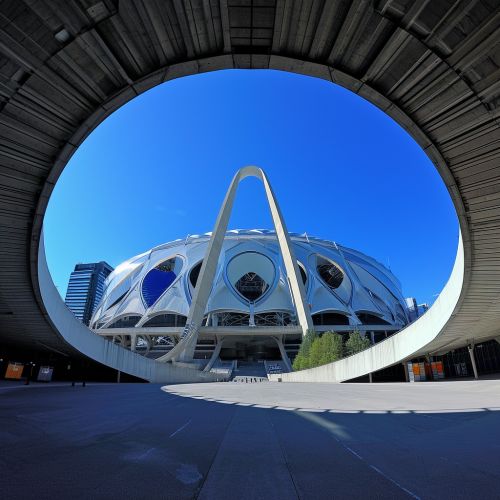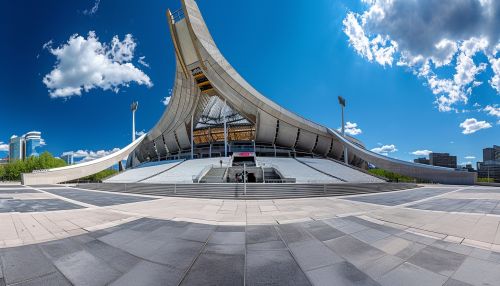Olympic Stadium (Montreal)
History
The Olympic Stadium is a multi-purpose stadium in Montreal, Quebec, Canada. It was built in the mid-1970s as the main venue for the 1976 Summer Olympics. The stadium is nicknamed "The Big O", a reference to both its name and to the doughnut-shape of the permanent component of the stadium's roof.


The stadium was designed by French architect Roger Taillibert to be an elaborate facility featuring a retractable roof, which was to be opened and closed by cables suspended from a huge 175-metre (574 ft) tower – the tallest inclined structure in the world. The design of the stadium resembles that of the Sydney Opera House in Australia and has been described as a masterpiece of Organic Modern architecture.
Construction
The construction of the Olympic Stadium began in 1973 with the expectation that it would be completed in time for the 1976 Summer Olympics. However, due to a series of setbacks including strikes and construction delays, the stadium was not fully completed until 1987, more than a decade after the Olympics for which it was built.
The construction of the stadium was plagued by problems. The complex nature of the design and the rapid pace of construction led to numerous errors. The most notable of these was the failure of the mechanism that was designed to move the retractable roof. This left the stadium without a functional roof until 1987, when one was finally installed.
Architecture
The Olympic Stadium is considered a landmark of Montreal and is one of the city's most distinctive structures. Its unique design, featuring a massive inclined tower and a retractable roof, make it a standout piece of architecture. The stadium's design was heavily influenced by the work of Catalan architect Antoni Gaudí, who is known for his unique and organic architectural style.
The stadium's roof, which is made of Kevlar, is supported by a network of steel cables attached to the inclined tower. The roof can be retracted and extended in 20 minutes, allowing for the stadium to be used in all weather conditions. The stadium's seating capacity is over 56,000 for baseball games, and over 66,000 for football games and concerts.
Usage
Since its completion, the Olympic Stadium has been used for a variety of events. It was the main venue for the 1976 Summer Olympics, hosting the opening and closing ceremonies, as well as athletics events. Following the Olympics, the stadium became the home of the Montreal Expos, a Major League Baseball team, until the team relocated to Washington, D.C. in 2004.
The stadium has also been used for a variety of other events, including concerts, trade shows, and conventions. It has hosted several international sporting events, including the FIFA World Cup and the Grey Cup, the championship game of the Canadian Football League.
Legacy
Despite its troubled history, the Olympic Stadium remains a symbol of Montreal and a testament to the city's ambition and creativity. It is a popular tourist attraction and a significant part of Montreal's architectural heritage.
However, the stadium has also been a source of controversy due to its high cost and the problems associated with its construction and maintenance. The stadium's retractable roof, in particular, has been a source of ongoing issues and has required several expensive repairs.
